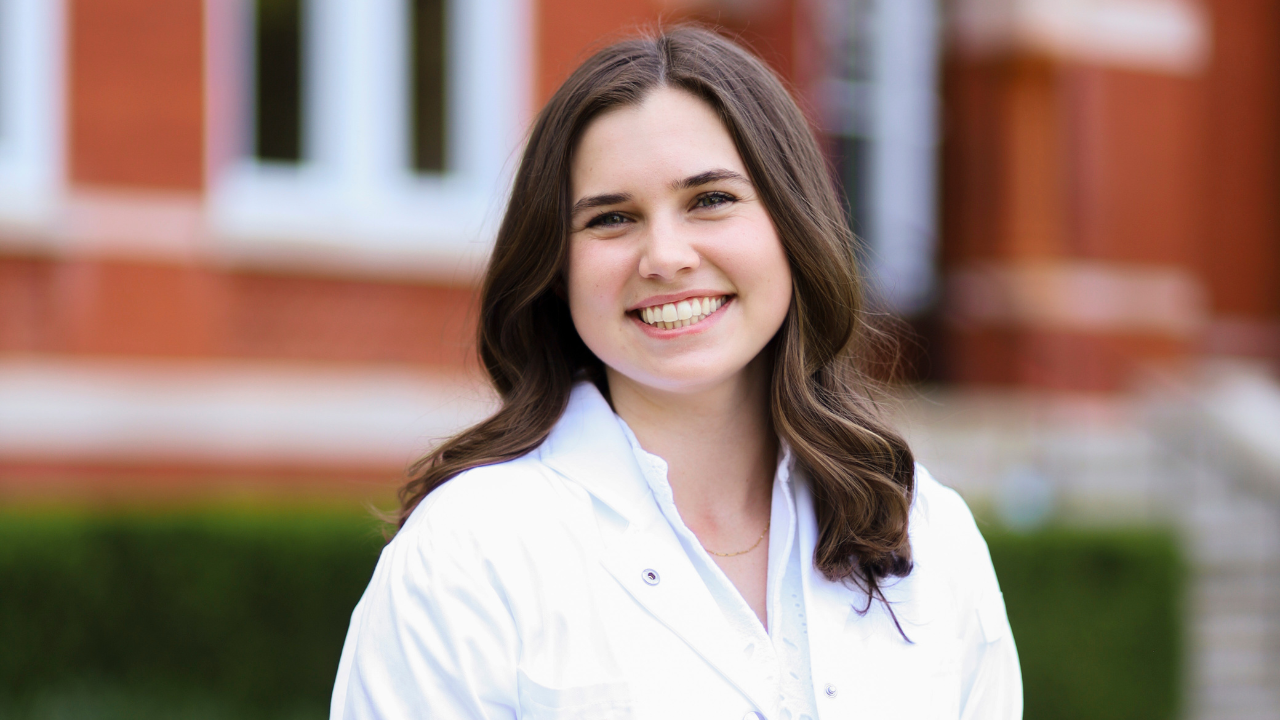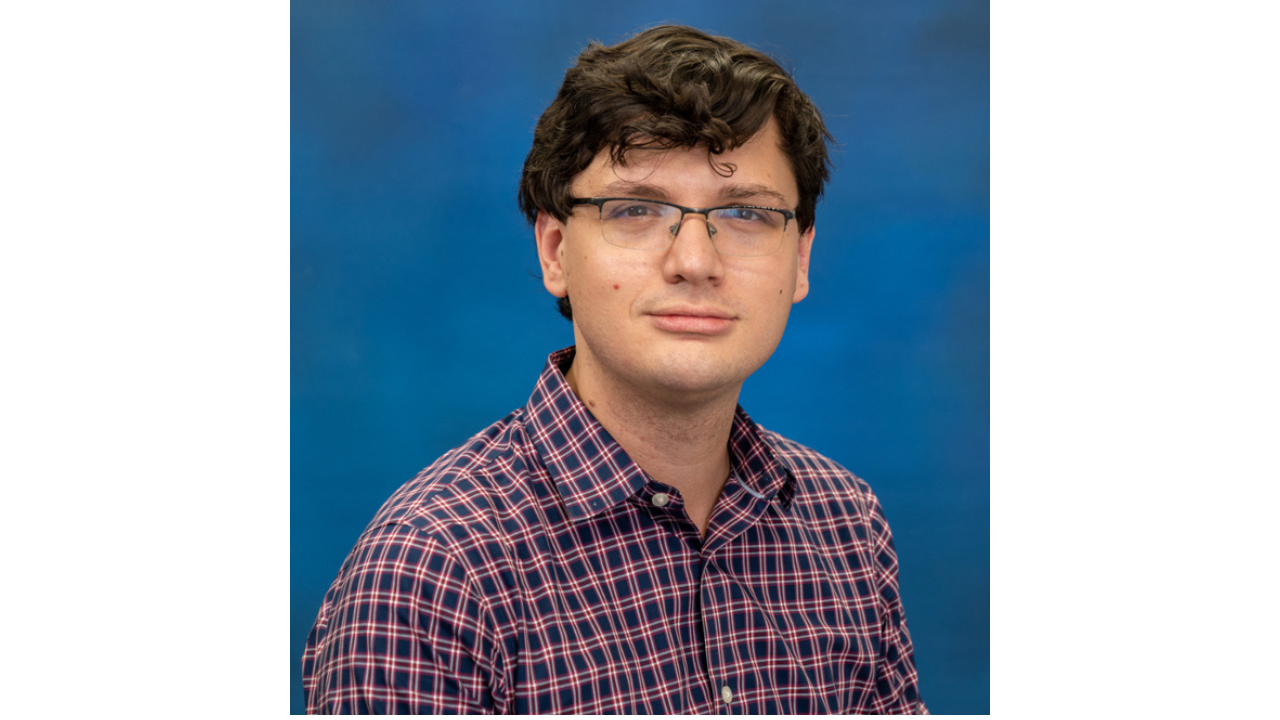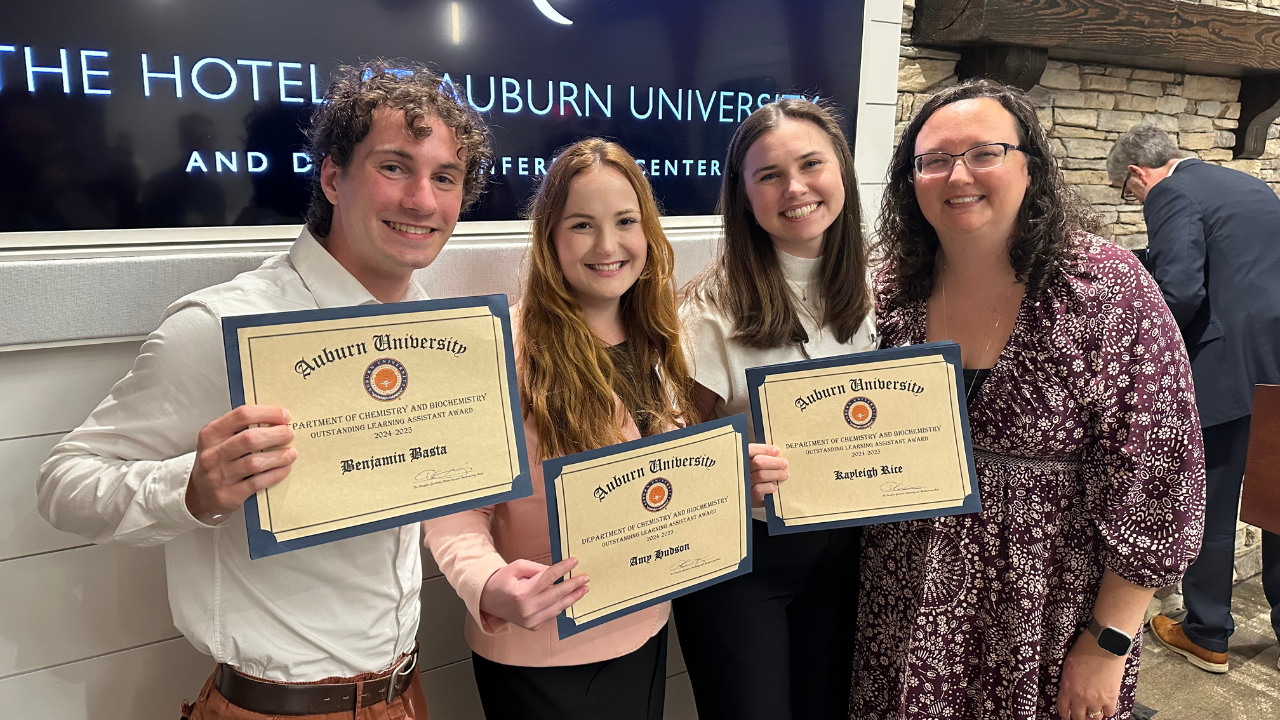content body

Kaleigh Rice spent six semesters as a Learning Assistant, many of them supporting organic chemistry courses.
At Auburn University’s College of Sciences and Mathematics (COSAM), a decade-old initiative is transforming how students learn. The Learning Assistant, or LA, program pairs experienced undergraduates with faculty to support active learning in large lecture courses.
For many students, the role is more than a résumé booster. It builds confidence, sharpens communication skills and sometimes reshapes career goals. Kaleigh Rice, a chemistry graduate who spent three years as an LA, is one of them. She says the role helped her master challenging material and sparked a lasting interest in mentorship.
Rice supported organic chemistry for four of her six LA semesters — a course that often overwhelms even well-prepared students. She returned not only to reinforce her understanding but to help others succeed.
“I kept coming back because organic chemistry is a subject that a lot of students struggle with,” she said. “I feel like I have a gift for explaining those complex topics in ways that people understand.”
In one case, Rice worked with a student who had failed the course the previous semester.
“We met, and I said, ‘Hey, you're back in this class again. What went wrong? Where can we fix it? How can I support you along the way?’” she recalled.
They developed a plan during office hours, and by the end of the term, the student no longer needed Rice’s help.
Stories like that are central to the LA program, which has grown from a handful of classrooms into a coordinated effort involving nearly 90 LAs who support thousands of students each semester. While responsibilities vary by course, all LAs help their peers engage more deeply by facilitating discussions, answering questions and supporting active learning. The program is fully funded by COSAM, managed by the Office of Associate Dean for Academic Affairs, supported by dicipline-based education research (DBER) faculty and coordinated by a group of non-tenure track faculty members.
Eric Burkholder, assistant professor of physics and a specialist in physics education research, has helped refine and evaluate the program. He and the COSAM team leading the LA program have improved onboarding, coordinated faculty training and streamlined the course-matching process.
“If I want to do the kinds of effective and active methods of teaching that I know work best, I need the LAs,” he said. “They’re essential to helping instructors create learning environments where students are actively talking, solving problems and helping one another.”

Eric Burkholder, assistant professor of physics and a specialist in physics education research, has played a key role in refining and evaluating the Learning Assistant program.
Burkholder noted a 60% increase in new LA applications over the past year. That momentum, he said, often starts with students who return after a positive experience or encouragement from a faculty mentor.
That enthusiasm is backed by results. Data show students in LA-supported courses are less likely to withdraw or fail and more likely to earn higher grades and pursue STEM careers or graduate programs. The impact extends to the LAs, who are more likely to be employed or in graduate school within six months of graduation.
“We knew the program was popular, but having the data to show its long-term impact on grades, retention and career outcomes has been really validating,” Burkholder said.
While many LAs go on to careers in science, others discover new interests. For some, the role sparks a passion for teaching or communication, which can shape future paths. This is often the case in fields like medicine, where the ability to explain complex ideas clearly is essential.
Much of that personal and academic growth stems from the program’s peer-to-peer model. Students and faculty say this structure is one of its greatest strengths. Unlike traditional teaching assistants, LAs don’t grade assignments or manage coursework, which helps create a more relaxed and open atmosphere. That approachability often leads to more candid conversations and deeper learning.
“Sometimes it’s easier to watch a classmate work through a problem than to follow a professor at the board,” Rice said. “It feels more personal.”
To become an LA, students must have taken the course and earned a strong grade. After applying, they’re matched to open positions based on interest, availability and instructor needs. The process has become more efficient in recent years, with improved systems for orientation, training and scheduling.
Burkholder and his colleagues continue to support students and instructors by sharing best practices, offering ongoing professional development for LAs and using tools like scheduling software to boost office hour attendance. With continued support from the COSAM Dean’s Office and a Bright Ideas grant from the Auburn Insight Lab, they’re also working to strengthen and expand the program for the next decade.
Rice, who is returning to Auburn as a master’s student in chemical engineering, says her time as an LA was a major factor in her decision to stay. The relationships she built with students and faculty shaped her academic and professional goals in lasting ways.
“I didn’t just want to work for the paycheck,” she said. “I wanted to make a real difference. And I did.”





